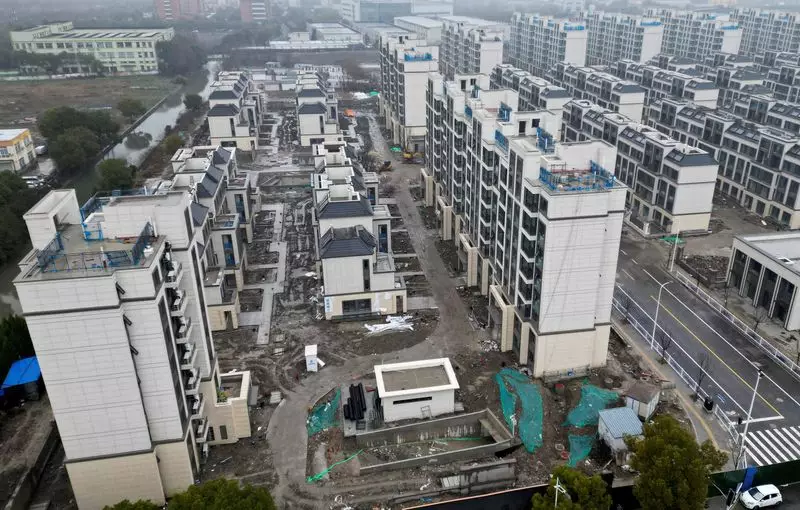China’s economy is currently navigating through turbulent waters, with its property market facing unprecedented challenges. As the nation grapples with slowing growth, the People’s Bank of China (PBOC) has unveiled a significant initiative aimed at rejuvenating the beleaguered real estate sector. The central bank’s directive, requiring banks to lower mortgage rates for existing borrowers, is a crucial part of a broader strategy to not just alleviate pressure on homeowners, but also to invigorate an overall economic framework that seems to be in disarray.
In the backdrop of this financial maneuver lies a disheartening reality: new home prices in China have seen their sharpest decline in over nine years, while property sales dropped by a staggering 18% in the first eight months of this year. This dramatic downturn signals more than just a temporary blip; it reflects a fundamental crisis of confidence among consumers who are increasingly hesitant to engage with a property market riddled with uncertainties.
On Sunday, the PBOC mandated that commercial banks implement reductions in interest rates on existing mortgages before the October 31 deadline. This policy stipulates that mortgage rates should not exceed 30 basis points below the Loan Prime Rate (LPR), effectively reducing average existing mortgage rates by approximately 50 basis points. This decisive step underscores the urgency of addressing systemic issues within the property sector, which has been exacerbated by a lack of buyer interest amidst economic uncertainty.
Concurrently, multiple cities, including Guangzhou, Shanghai, and Shenzhen, have announced further measures to dampen barriers for homeownership, such as easing restrictions on purchases and lowering down payment requirements. These moves are not merely policy adjustments but signify a pivot in China’s overarching strategy to combat the stagnation that has hindered real estate transactions this year.
Despite the expansive set of reforms introduced this year, the economic response has been tepid at best. While the PBOC’s mortgage rate cuts aim to lighten financial burdens for homeowners and potentially foster increased domestic consumption, the overarching sentiment among consumers remains one of caution. The property market’s allure has significantly waned, complicating efforts to stimulate transactions. Previous attempts at easing mortgage terms largely benefited new buyers, inadvertently sidelining existing homeowners who remain encumbered by higher borrowing costs.
In fact, many households are opting to accelerate the repayment of existing loans rather than engaging in new purchases or investments. This preemptive behavior reinforces the notion that consumer confidence is not easily swayed by adjustments in interest rates alone.
Local governments have attempted to rally their local economies through various initiatives. Apart from Guangzhou’s complete lift of home purchase restrictions, Shanghai and Shenzhen are proactively working to attract non-local buyers—a critical move aimed at increasing market participation. Such actions suggest that local administrations recognize the imperative for immediate interventions in their respective real estate markets to restore vitality.
While these measures are commendable, they also highlight a critical dependency on competitive pricing and favorable regulations to lure potential buyers back. The question remains whether incentives can effectively shift the prevailing atmosphere of skepticism that currently dominates consumer sentiment.
To navigate the complexities of the present economic landscape, the central bank has acknowledged the need for transformative changes in the mortgage pricing mechanism. The PBOC has signaled that the traditional framework, which has manifested flaws through this economic turbulence, requires urgent reassessment.
As the central government extends support to developers through financed loans until 2026, the outlook remains cautiously optimistic. Should these combined measures result in a tangible uplift in market activity, they may provide a much-needed lifeline not only for the property sector but also for the broader economy. However, any recovery will largely depend on restoring consumer faith—an endeavor that may prove to be as challenging as the economic crisis itself.
While these initiatives represent a concerted effort to counteract economic decline, the success of their implementation rests heavily on the evolving dynamics between homeowners, developers, and economic policies aimed at facilitating a more resilient property market.

